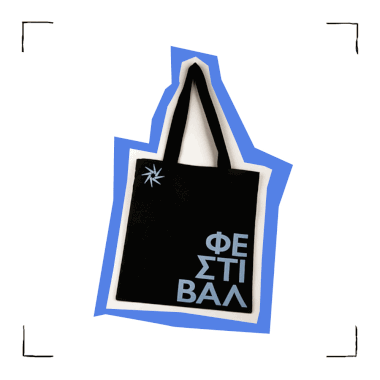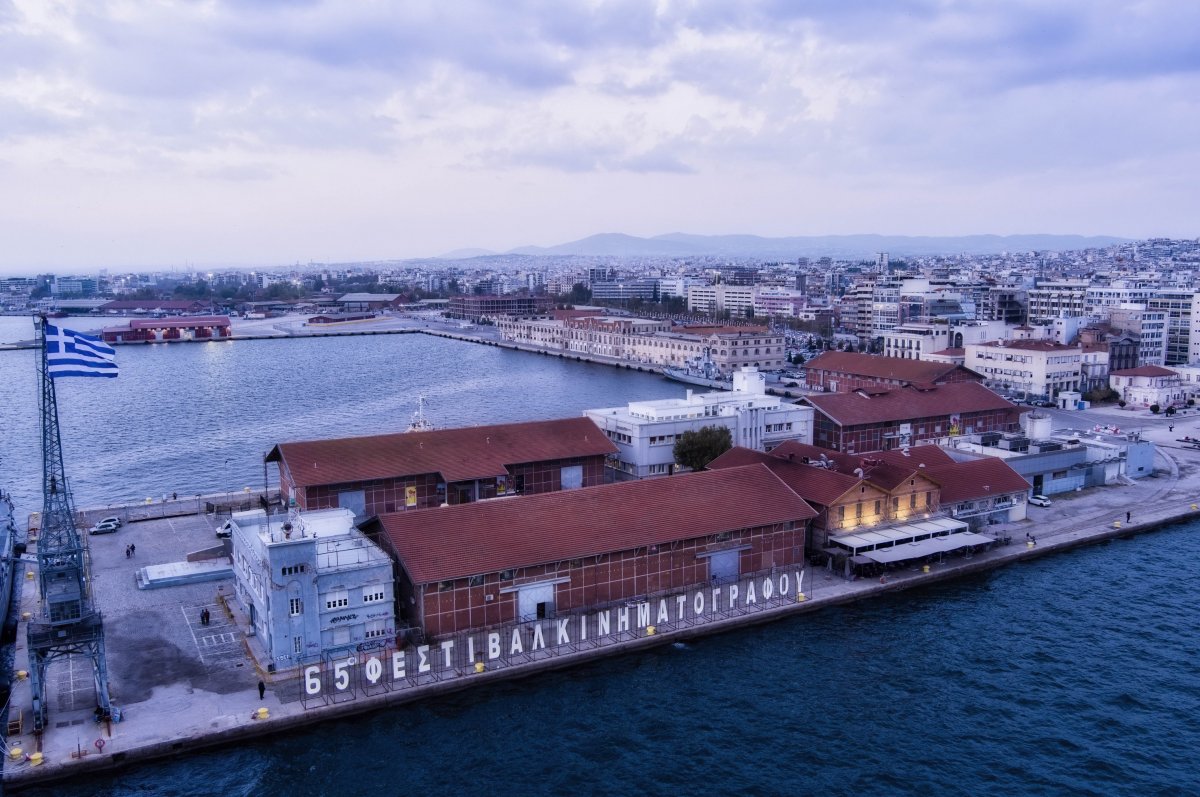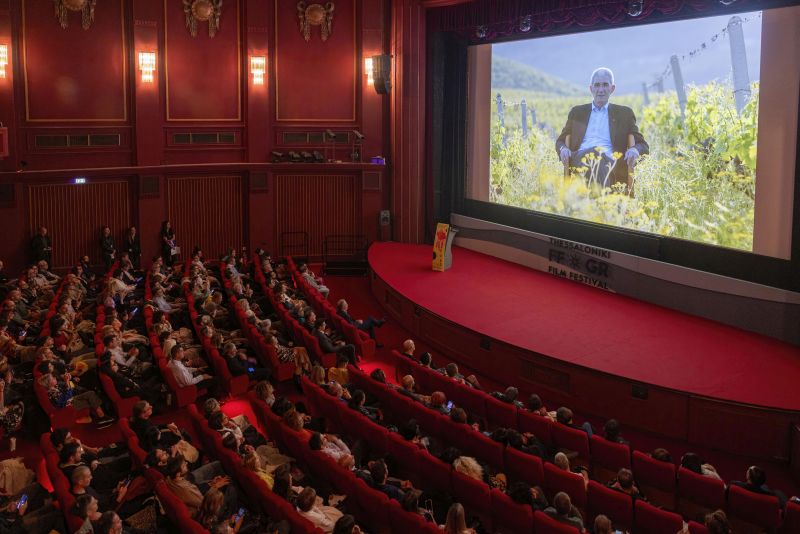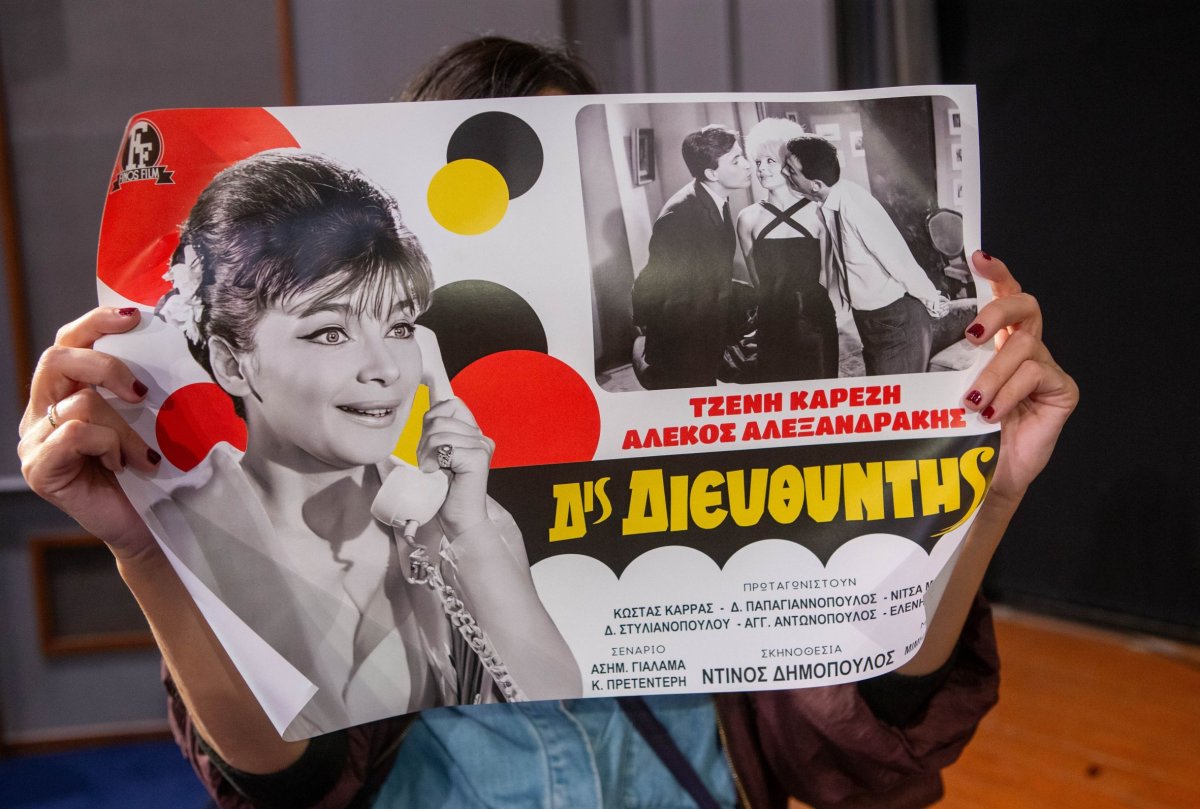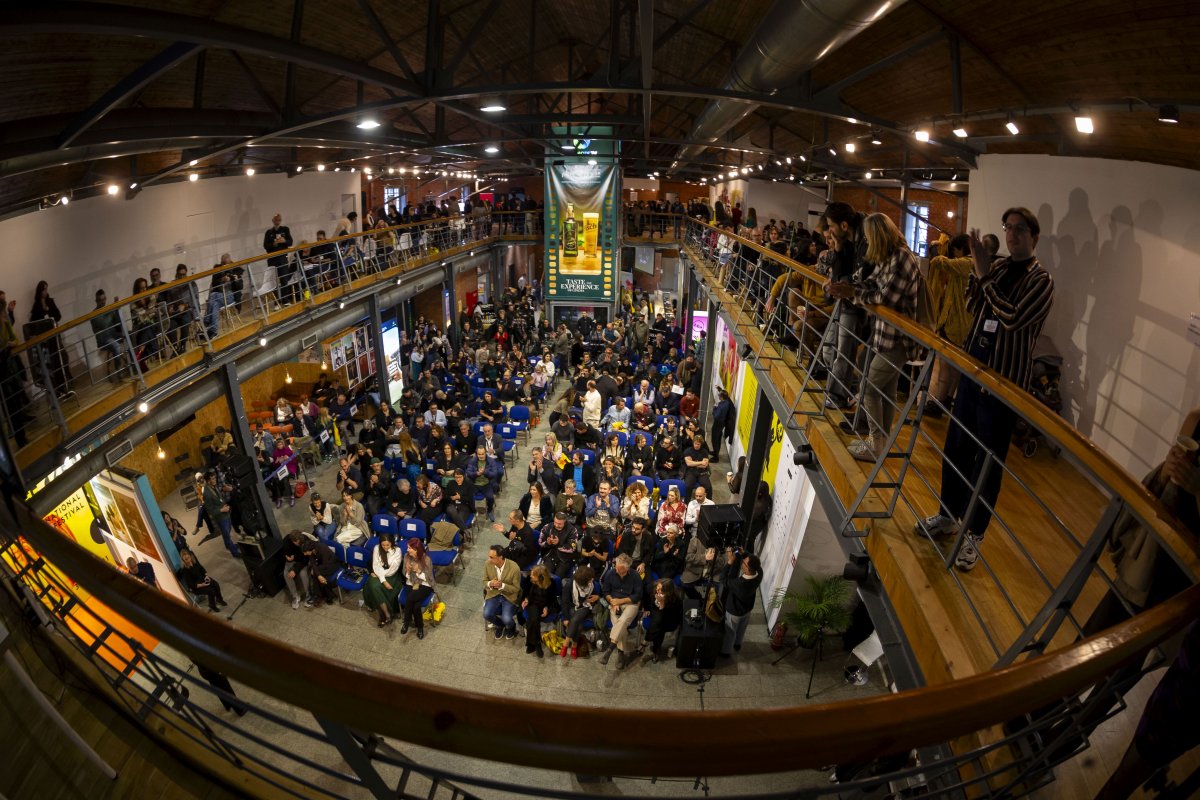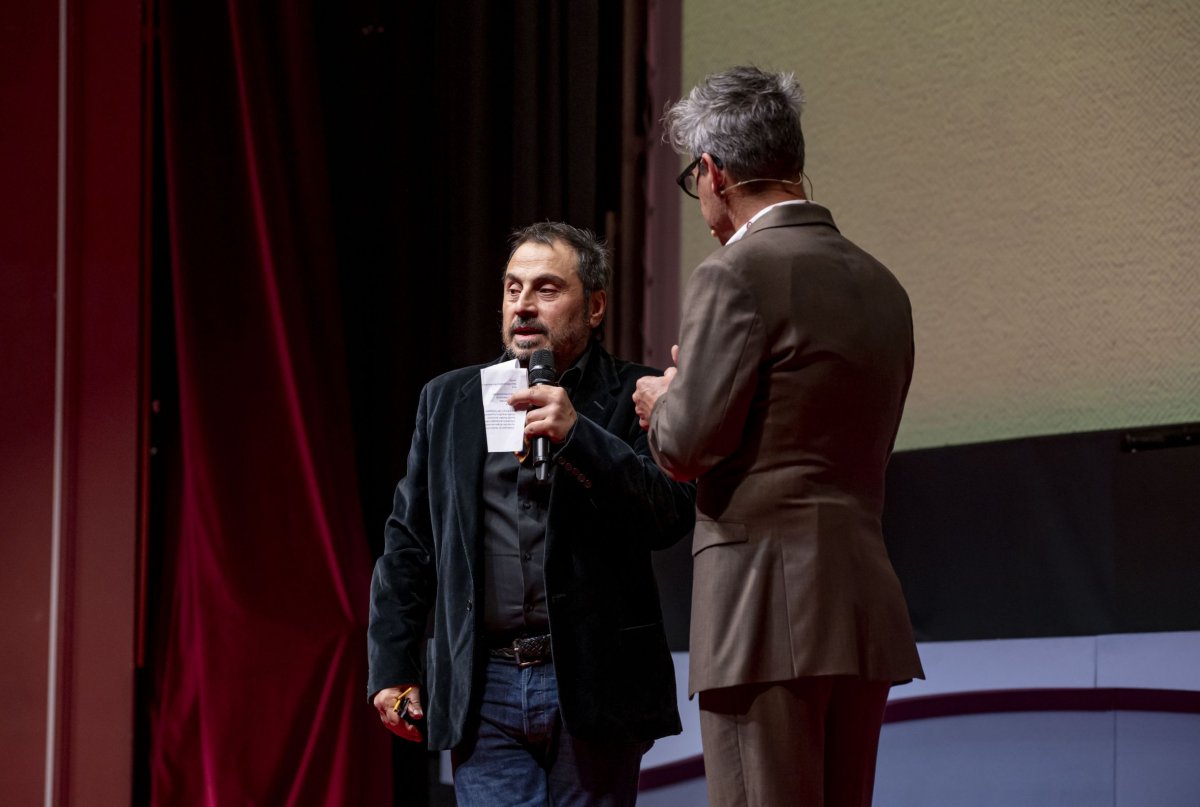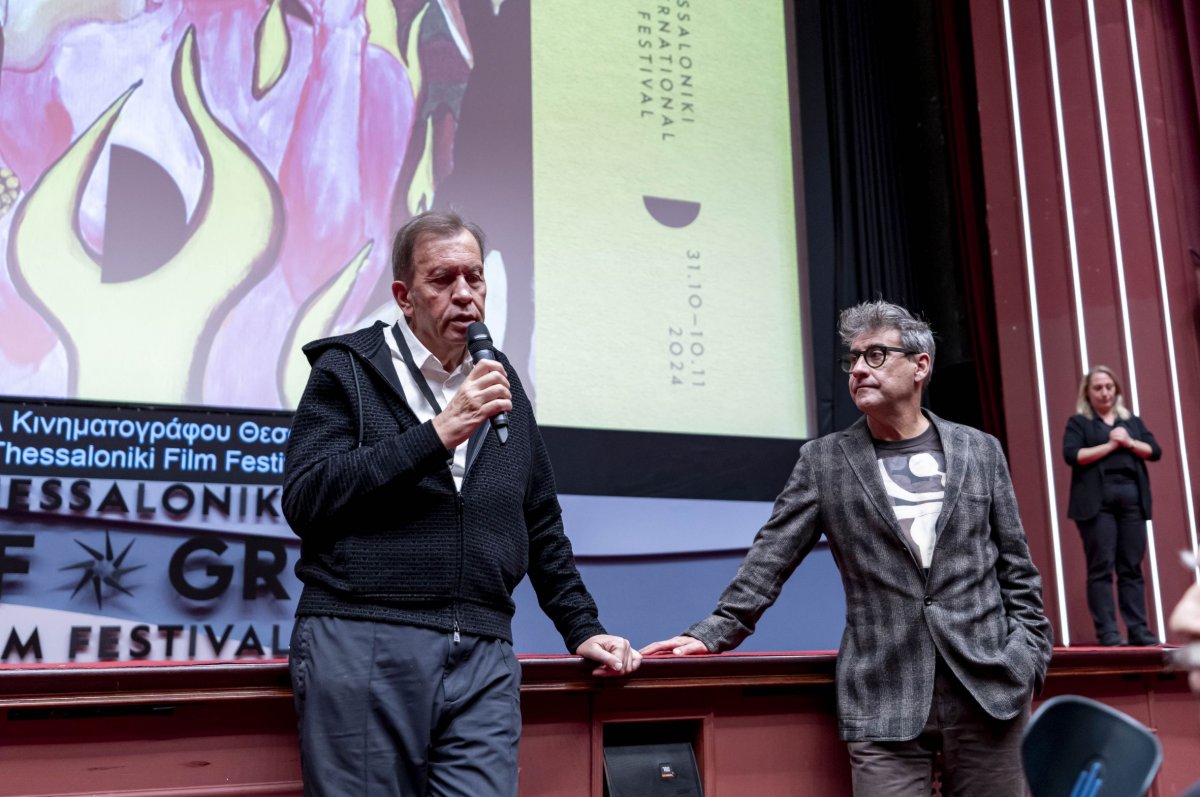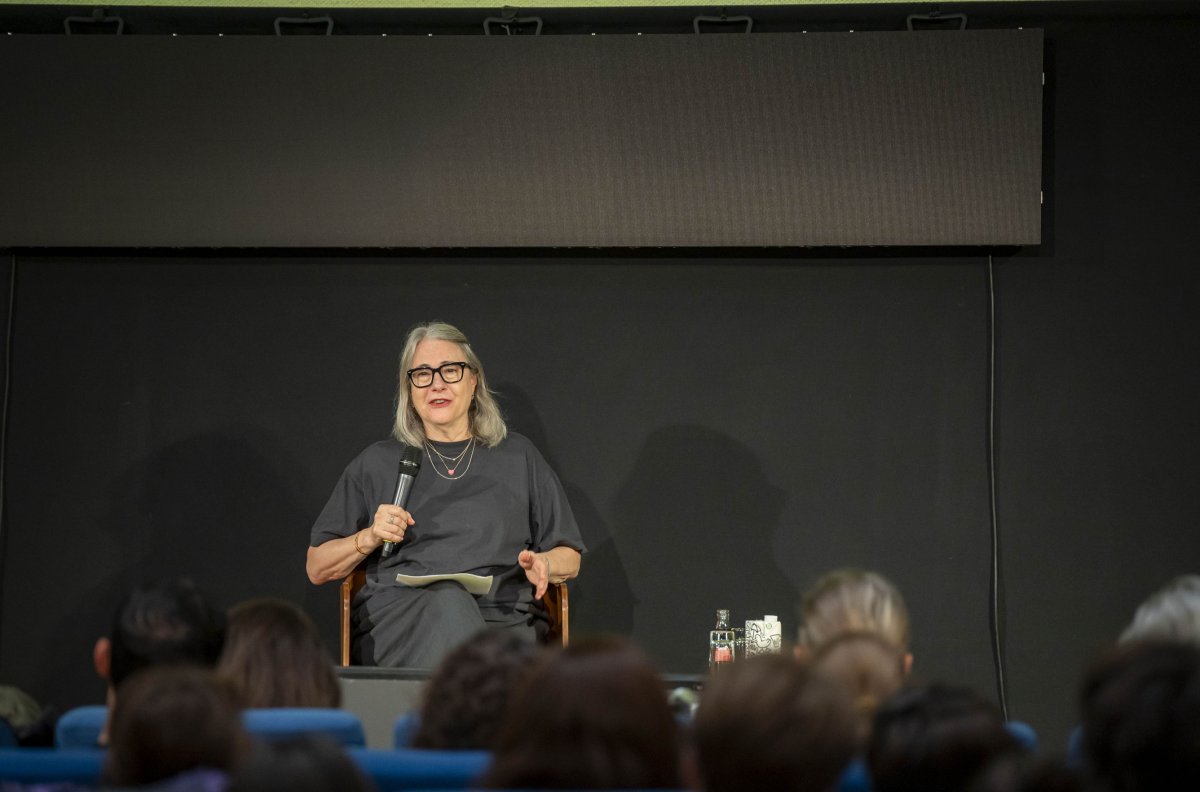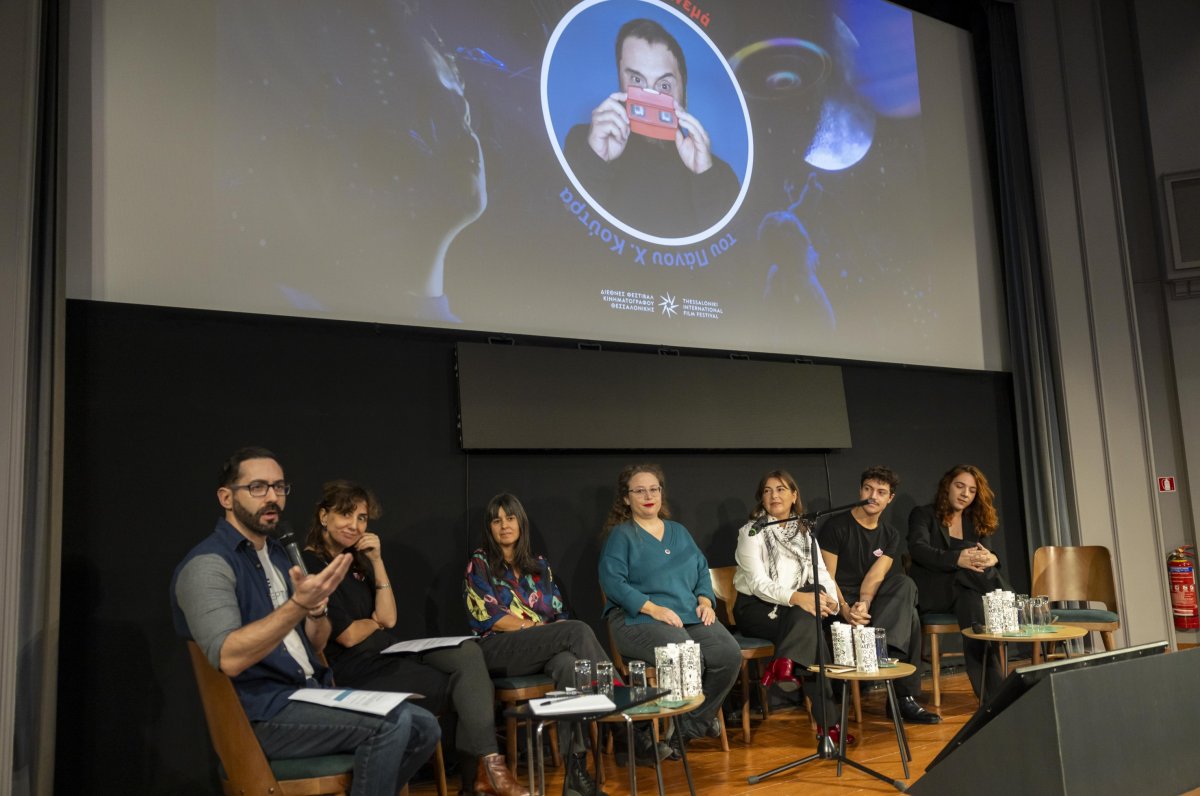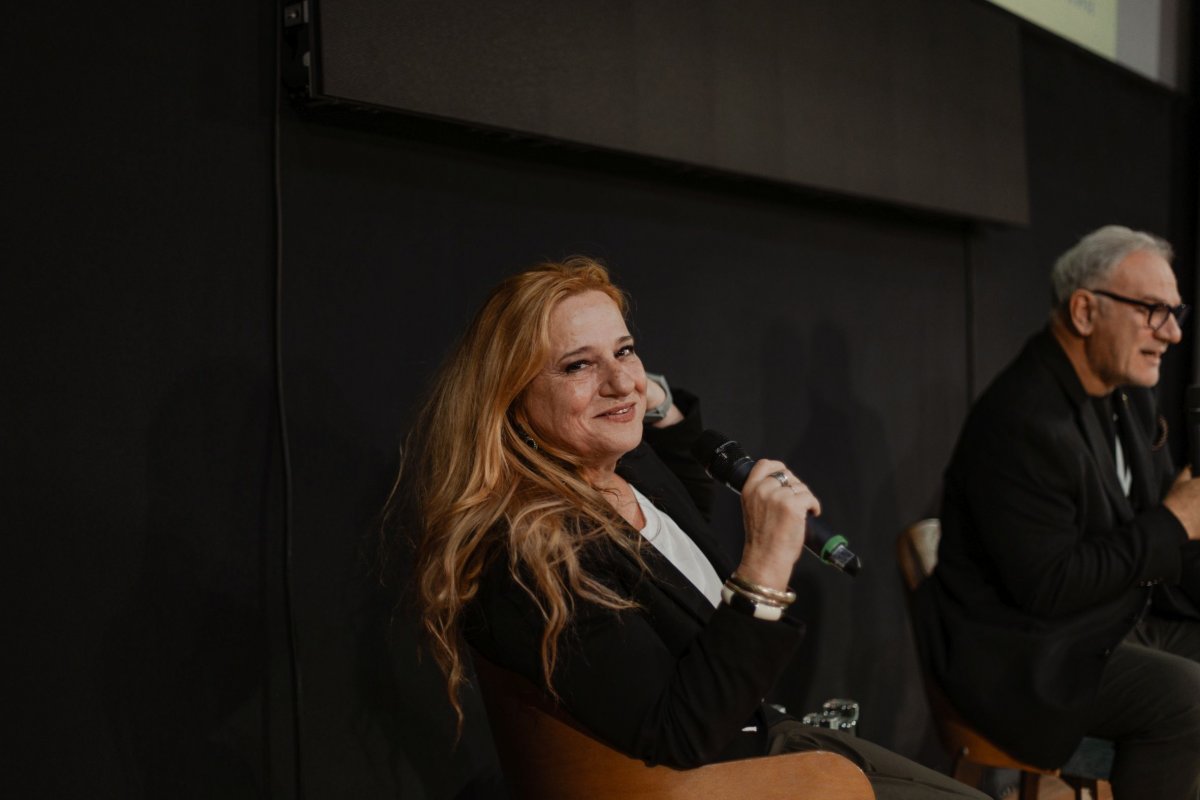On Sunday March 10th, a discussion took place in the Green Room with Dimitris Papaioannou, on the occasion of his fully-rounded presence in the 26th Thessaloniki Documentary Festival. Dimitris Papaioannou signed the Festival’s poster, his video installation Inside, along with the backstage video Backside, are showcased at the MOMus - Experimental Center for the Arts. Eva Stefani’s documentary Bull’s Heart, produced by Onassis Culture, will also be screened at the Festival as a work-in-progress. The film follows Dimitris Papaioannou’s play Transverse Orientation, produced by Onassis Stegi, during its tour on the European stages. In addition, the artist will present his short films Nowhere and Primal Matter on Wednesday March 11th, in Stavros Tornes cinema, at 17:00.
Introducing the discussion, the internationally acclaimed artist referred to the attack on the two trans individuals that happened in Aristotelous square, a couple of hours earlier. “It is worrying to me that when young people encounter something that disturbs their worldview, their reaction is violent. The mindset that leads us that when something does not resemble us, it threatens us is not acceptable to me anymore. I just wanted to say all this because there is no point in talking about art, festivals, etc., without addressing something boiling underneath the entire world, something not only relevant to homophobia. I don’t understand why young people react violently. Towards women, and towards anything that is different. Slowly, things are bound to change. When I was growing up, I couldn’t imagine that things would end up here,” he stated.
“A typically Mediterranean mentality,” he continued on saying, “consists of a special notion about masculinity, which has been accumulated by great gay men artists. Pasolini and Tsarouchis fell in love with this special male status, which has a lot of good aspects, yet entails a potential of violent conduct; which is dangerous and must be left behind,” he emphasized. At this point, Dimitra Nikolopoulou, Thessaloniki Film Festival’s Head of Communication, connected this year’s grand tribute on LGBTQI+ issues, Citizen Queer, with the discussion: “We bring to the forefront matters of identity, issues of visibility that are highly important, but mainly issues that are invisible and concern each person individually.”
At this point, two important questions were posed to Mr. Papaioannou, regarding whether the Festival’s screenings ultimately reach the audiences that need them most of them, and whether queer is a trend. “Of course, a festival does what must be done and whoever wants, comes and sees that. Similarly, artists do what they desire and whoever wants to, comes and watches it. The audience will watch whatever they desire. We will not force anyone to be trained in anything. You are asking something else: whether there is a narcissism around art and festivals, that everyone agrees on what's going on in the world, but there is no infiltration to the public body. What can an artist tell you about that?” On the second question, he commented: “Yes, queer is a trend. That doesn’t mean it doesn’t have substance anymore. It’s not one way or another. I’m completely against the way this question has been articulated. “Yes, it’s a trend, it will pass; its substance, so it must endure. They are not the opposite of each other,” he stressed.
Then, he talked about the use of queer as a political agenda: “There is an entire theory on how queer issues and identity politics have evolved into some kind of political agenda against conservative politics, and it is unfair to those of us belonging to the gay community. “It’s nice that things are moving forward, but it is not nice to be used by anyone, for your rights to be utilized in order to promote another type of agenda. “I repeat, the problem is why do our children express themselves with violence? And let’s focus on the positive: It’s utterly normal for those of us born in an entirely different environment, to be surprised by the evolution happening in the last 20 years. “We must be glad. We’re doing better but we aren’t where we should be yet.”
“I don’t want to adopt a public stance on the Greek family, on what it does, and how it nurtures its boys. I just want to deter you from focusing on the generality of homophobia, which has nothing to say, and bring to your attention the specificity of dealing with unsettling issues violently,” he mentioned. “The more we keep moving forward, the more multi-layered issues will be raised on the evolution and the management of archetypal actions of human life. Democracy is a highly complex system, and we cannot face it with simple terms. Understanding and love is required for the ‘enemy’ - or what we so easily call an ‘enemy.’ We are all equal,” he emphasized.
On the current state of affairs, he stressed that he is concerned as a citizen. “Creation comes from life. I follow the current state of affairs, but its direct depiction in my work as an artist doesn’t interest me, I am not that type of artist. There are other artists that concern themselves with it. I am a hands-on artist, experiences and technologies must pass through my system first, which takes time. As a citizen, I am allowed to express myself in a more marketable manner, however, I respect art more than my political status, and as an artist I am a little more ‘solitary,’ more ascetic. As a citizen, I can utilize the reputation my art provided me with, in order to say something that might be a little useful on a social standpoint. When I use my personality for art, it is something different as I respect the sport in which I compete.”
At this point, Mrs. Nikolopoulou asked Mr. Papaioannou what serves as his own transverse orientation, which is his own internal GPS and where it draws him: “Currently, an action that can dominate is the adaptation of my art into a documentation with me acting as its editor. The film Nowhere, that you are going to watch, is a sample from this tendency to read my work like a 35-year-old film studio, which will lead to a modular film, which I will freely give away on the internet for the next ones to come. This is what attracts me the most at this point in time, along with the possibility to stop it when the need for a theater production arises. I have burned myself in this job, I’m really tired. During recent years, I have toured all over the world; I have this obsession with being present at every performance and this old-fashioned relationship with the audience. I want them to see me there and comprehend that I am not a franchise, I did not send the work, but I personally delivered it. The fatigue is great and, more and more, I realized that I find my joy either by drawing naked on the beach, in Anafi, or by spending endless hours editing on the computer, remaking the choreography of the things I have created. This seems to be the turn in which I have arrived in my life,” he remarked.
Continuing on, he stated regarding his love for the art of editing: “Editing is a true choreography. Often, I serve many things simultaneously in my performances for the human eye to choose. And when the time comes for anyone to edit, refusing the tri-camera - this utterly boring depiction of live art -he has to make his choices, whether they be mediums, close-ups or other angles and, of course, then make an evaluation. He must make some daring choices regarding how he will direct the viewer’s gaze. This is fascinating to me, personally, and I want to do it myself for my work. If I have time, before my life is over, I want to personally hand over my archive, as I want it to be seen by this future young man I imagine, who is 20 years old and in 150 years will be involved in the archaeology of the spectacle."
Referring to Eva Stefani’s documentary Bull’s Heart, produced by Onassis Culture, which will be presented as a work-in-progress in the Festival, expressed his admiration for the filmmaker: “Eva Stefani is one of the greatest Greek artists. In my personal list of the greatest living Greek artists, included in the top ten for me is Eva. We had a hard time in Bull’s Heart, because it's not easy to open up your house in order for the people to peek inside. What you will watch is Eva's portrait, it's her autobiography, as is every film of hers, because that's what an artist ought to do. The strongest passport to trusting an artist is my appreciation of them. I love her as a person, she is my friend, but the real criterion is that she is an important artist."
On his love for cinema, he said: "It's the art I love, I know it quite well. It's one of the things I'll regret on my deathbed that I didn't do cinema. Everything I've done, painting, comics, shows, cinema, it's the same, it's an eye that sees: the eye of the painter. Tsarouchis, my first and greatest teacher used to say that there are 3 things you must see in order to comprehend what painting means: The murals of Daphni Monastery, the frescoes in Pompeii, and the murals of the Church of Saint Demetrius in Thessaloniki. Tsarouchis, had told me that once you learn to see like a painter, you will never be able to explain it to anyone else.”
When asked about whether as the years go by, he becomes more esoteric and touches more intellectual chords through his art, he said: “I am getting older and the body's momentum transforms into something other than fatigue; into another world-view. I have moved, I think I started out naive, and transformed. However, like I often say, the one most unreliable to speak about his art is the artist himself. Our mission is up to the point we deliver the work. All the surroundings are a perversion of promotion. The primary thing is to communicate with the artwork. It has to do with this alchemical power of art in transforming the materials, depicting the geometry behind things. We never talk about these. We must spend some time with the artwork for the benefit of the human being, itself.”
He then spoke about his work, Inside: “It is one of my favorite works. The biggest box-office failure I have ever done, and the one instance the Greek media punished me for. An enormous experiment for which I am proud of, and which has survived as a monoplane of very good quality, traversing its second term throughout the world’s festivals as a video installation, when in fact it was three-dimensional, which Athenian society at the time snubbed. Inside survives in a different way. It was made using cinema’s logic in a real, three-dimensional space, this thing was happening exactly as you see it. Simultaneously, I recorded the behind-the-scenes with a small camera in hand of this six-hour perpetual recycling of materials. I titled it, Backside, a short documentary in which my taste in cinematic language is showcased.”
At this point Mrs. Nikolopoulou spoke about the ever-evolving language of cinema, which Mr. Papaioannou closely follows, and he stated: “I love cinema. How a live performance, presented in front of an audience, becomes a documentation to remain after the live performance dies, remains an unsolved cinematic problem. Enough with the triple camera, the audience perspective and the productions that shoot the performances in the studio to begin with. I am speaking about a major issue: On the one hand, we make art, which passes. How, then, can cinema accumulate it, while the work remains edgy, exciting and artistically energetic in its adaptation to the new medium, rather than being a mere record of it. How is it possible that a live event’s documentation constitutes a work of art by itself, without being boring.”
Concluding, Mr. Papaioannou spoke about his appreciation and love for Yorgos Lanthimos, the enthusiasm with which he follows his work and the delight he feels that Yorgos filmed some of his performances, among which are Medea, Dracula, Human Thirst, and Storm.



